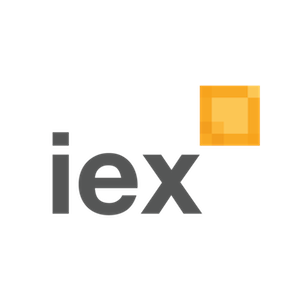
It has taken Wall Street insiders, headed by Brad Katsuyama, five years to figure out what has changed with the stock market and why it hasn't been behaving in the way it's supposed to. After the release of 'Flash Boys' by Michael Lewis, it took high-frequency trading (HFT) related companies only hours to start defending their industry and throwing allegations left and right against both the author of the book and its main character.
The debate entered its fifth month in August, and we are still very far from a conclusive outcome of what has changed after the allegations surfaced. The alleged fair market place, which Mr. Katsuyama founded and named the IEX Group, was recently attacked in an op-ed by former CFTC Commissioner Bart Chilton. What's wrong, is 5 a magic number when we talk high-frequency trading? Not quite - according to Mr. Chilton's article in the New York Times, it's more like 50. Fifty percent of current stock market trading is occurring thanks to "professional grade intermediation in modern capital markets," as stated by the author of the New York Times' piece gently dubbed, "No Need to Demonize High-Frequency Trading".
The aforementioned piece also states that this fifty percent figure is even present on the allegedly HFT cannibalizing-free IEX Exchange. Mr. Chilton writes, "Even trading volume on the IEX exchange, which is trumpeted as creating 'institutional fairness' in the Michael Lewis book 'Flash Boys' about the topic, is now made up of roughly 50 percent high-frequency traders, according to conversations with market participants, though the exchange says it is significantly lower.”
The latest piece blaming IEX of lack of transparency has triggered a response from Brad Katsuyama himself, who has written a piece on Bloomberg View, elaborating on the comments about IEX. He has simply stated that what Mr. Chilton has written is false, elaborating, "While high-frequency trading firms are estimated to generate 50 percent or more of the volume on other stock markets, on IEX, high-frequency trading firms currently make up less than 20 percent of our volume."
He notes that it's tough to take a stance on how much HFT should be done on any given market, while clarifying, "Those high-frequency traders who do trade on our market (we like to call them electronic Market Makers ) are the ones who do not require some unfair advantage to succeed. By creating a market without distinct advantages, IEX has allowed the HFT crowd to define itself."
This is a point well worth elaborating on. Apparently in the end, according to Mr. Katsuyama who has spoken against exchanges tolerating high-frequency trading companies on a number of occasions, there could be merit from some HFT participants in the market place. Forex Magnates' reporters reached out for a comment from Brad Katsuyama and the IEX, but at the time of publication no response had been received.

















